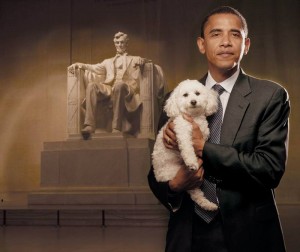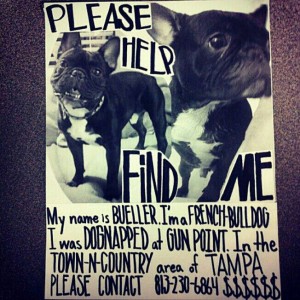 Voters often make the connection between political figures and what types of pets they own and how they treat them. Presidents throughout the years have used their “pet connections” to help them establish themselves as compassionate and understanding human beings.
Voters often make the connection between political figures and what types of pets they own and how they treat them. Presidents throughout the years have used their “pet connections” to help them establish themselves as compassionate and understanding human beings.
“Presidents and their pets have a long and storied history,” says Garrett Graff, a goldfish owner and editor-in-chief at Washingtonian magazine “Most of us don’t ‘get’ Middle East oil politics, and the rise and fall of the G.D.P., but we ‘get’ it if you connect with a dog or you connect with a cat.”
Barring in mind that sometimes the way a presidential candidate connects with their pets can influence voters. For example, President Obama admitted to eating dog as a child and Mitt Romney admitted that 30 years ago he had put the family dog in a luggage carrier and had him ride on the roof of their car on a trip to Canada. This of course made the White House correspondents dinner very entertaining.
Many presidents have had pets from George Washington’s horses and hounds to Theodore Roosevelt’s menagerie which included not only dogs and horses but snakes, lizards, parrots, ponies, bears, a zebra and a one-legged chicken.
“John Quincy Adams,” Graff says, “actually liked surprising guests with an alligator he kept hidden in a bathtub.”
Woodrow Wilson had a Sheep which eat grass on the White House lawn and Howard Taft preceded Wilson with a Cow on the White House lawn. Wilson even went so far as to bring a flock of sheep to mow the White House lawn during World War One.
Calvin Coolidge had an assortment of animals like Roosevelt which included lion cubs, a raccoon, a bobcat, a goose along with many other animals including a pygmy hippo named Billy which was given to Coolidge by Harvey Firestone of the car tire company fame.
“Both Teddy Roosevelt and Calvin Coolidge gave large parts of their menageries to the National Zoo here in Washington,” Graff says, “and even today many if not most of the pygmy hippos here in the United States are descendents of that Calvin Coolidge hippo.” Now that’s a presidential legacy.
One of the most famous political pet stories is about Franklin D. Roosevelt’s Scottish terrier, Fala, which was accidentally left behind on a tour of the Aleutian Islands. The navy was dispatched to rescue Fala and Roosevelt’s critics were quick to pounce on the wasted taxpayer funds. Roosevelt put his critics to the task when he remarked “Well, of course, I don’t resent attacks,” said Roosevelt “My family don’t resent attacks. But Fala does resent attacks!”
So with so much at stake when being in the public eye why risk having a pet in the White House? Graff believes “The presidency is a very lonely undertaking, and I think there are many moments in the White House where what you really want to do is take your pet for a walk.”





